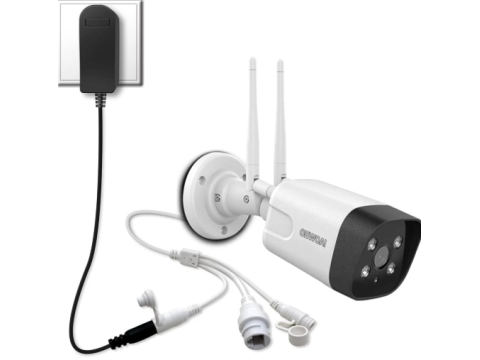Wireless Surveillance Systems – Setup and Benefits
The growing demand for wireless surveillance systems is driven by several factors, including:
- Simplified installation with fewer cables.
- Mobility for temporary or frequently relocated setups.
- Limited access for wiring, such as in rental properties or protected structures.
- Hidden systems, especially for discreet monitoring.
Whether you’re aiming to reduce installation labor or embrace modern, mobile surveillance, wireless solutions offer unmatched flexibility.
Key Wireless Surveillance Technologies
Wi-Fi Cameras
Wi-Fi cameras are the backbone of most wireless surveillance setups. These cameras can transmit video signals wirelessly, making them perfect for:- Remote locations with limited wiring options.
- Properties requiring aesthetic or covert installations.
Mobile Technologies (GSM, 3G, 4G)
For long-distance monitoring, mobile networks provide excellent solutions:- GSM Surveillance: Ideal for sending notifications or short clips via SMS or email.
- 3G/4G Systems: Suitable for real-time monitoring with minimal delay.
Battery-Powered Cameras
Fully wireless cameras often include internal batteries, eliminating the need for power cables. While convenient, these require periodic recharging or replacement.
Strategies to Minimize Wiring
Even when wireless solutions aren’t fully viable, reducing the number of cables can streamline installation:
Using Power Over Ethernet (PoE)
PoE technology allows both power and video data to travel through a single Ethernet cable. This reduces the need for separate power lines and simplifies installation.Applications:
- Large-scale facilities like malls and airports.
- Office spaces with existing network infrastructures.
Combining Analog and Digital Systems
Hybrid setups can maximize flexibility while minimizing costs:- Analog cameras for localized areas connected to a nearby DVR.
- Digital networks to centralize data across multiple locations.
Localized Power Sources
Placing power supplies near cameras reduces the length of wiring required and minimizes voltage drops.
Pros and Cons of Wireless Surveillance
Advantages
- Ease of Installation: Requires no extensive cabling.
- Mobility: Cameras can be relocated effortlessly.
- Aesthetic Appeal: Ideal for maintaining property appearance.
- Cost Savings on Installation: Reduced labor for cable routing.
Considerations
- Signal Interference: Wi-Fi or mobile networks can be affected by environmental factors.
- Power Supply Needs: Battery-powered cameras require regular maintenance.
- Higher Initial Costs: Wireless devices are often more expensive than wired counterparts.
Conclusion
Wireless surveillance systems provide versatile solutions for residential, commercial, and covert applications. By understanding the strengths and limitations of wireless technologies, you can design an optimized setup that balances functionality, cost, and convenience. Choose a system tailored to your needs, and combine wireless and wired elements where necessary to achieve the best results.

